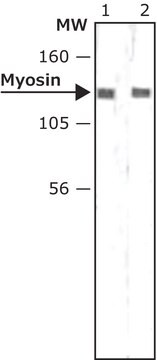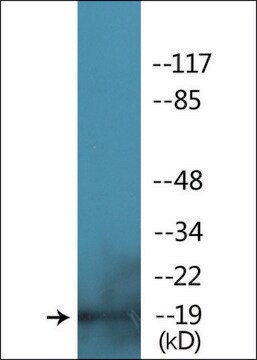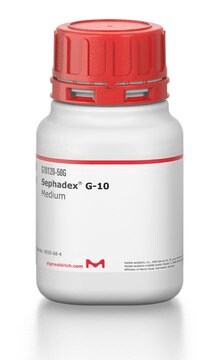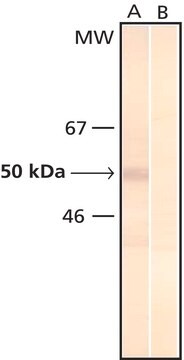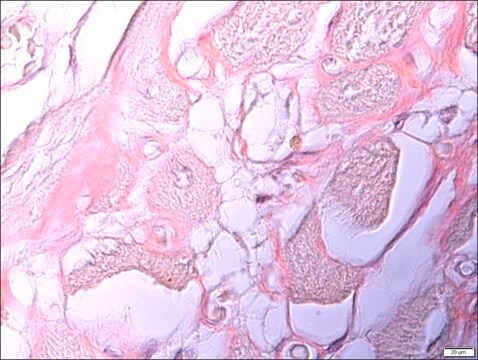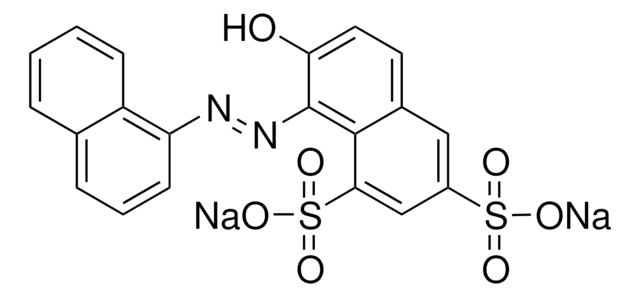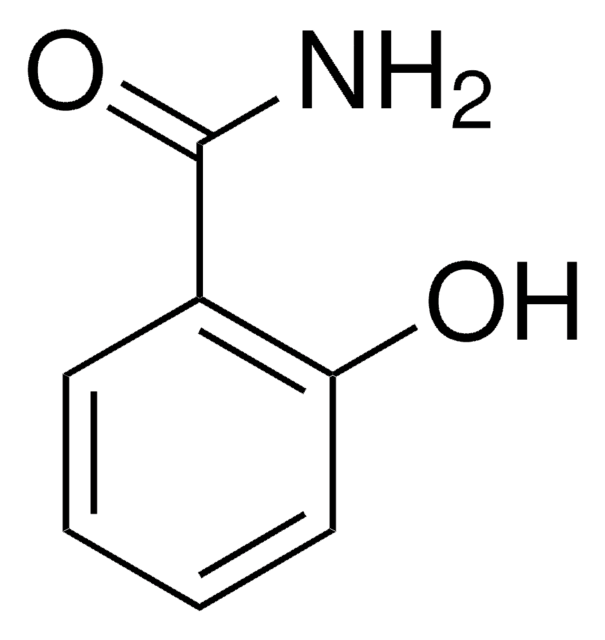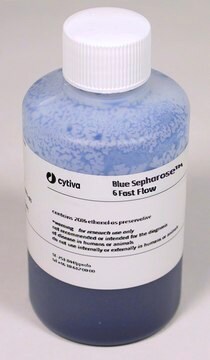M5688
Mimetic Orange 1 Ligand Affinity Adsorbent
suspension
Se connecterpour consulter vos tarifs contractuels et ceux de votre entreprise/organisme
About This Item
Produits recommandés
Application
Ligand affinity adsorbents are used in protein chromatography, affinity chromatography and dye resins. Ligand affinity adsorbents have been used to describe a simple protocol for the purification of Taq Polymerase from E. coli lysates as well as for the purification of other DNA polymerases.
Mention d'avertissement
Warning
Mentions de danger
Conseils de prudence
Classification des risques
Flam. Liq. 3
Code de la classe de stockage
3 - Flammable liquids
Classe de danger pour l'eau (WGK)
WGK 1
Point d'éclair (°F)
95.0 °F - closed cup
Point d'éclair (°C)
35 °C - closed cup
Équipement de protection individuelle
Eyeshields, Faceshields, Gloves, type ABEK (EN14387) respirator filter
Faites votre choix parmi les versions les plus récentes :
Déjà en possession de ce produit ?
Retrouvez la documentation relative aux produits que vous avez récemment achetés dans la Bibliothèque de documents.
Emily R Beynon et al.
Plant physiology, 151(1), 253-261 (2009-07-17)
The explosive 2,4,6-trinitrotoluene (TNT) is a significant environmental pollutant that is both toxic and recalcitrant to degradation. Phytoremediation is being increasingly proposed as a viable alternative to conventional remediation technologies to clean up explosives-contaminated sites. Despite the potential of this
Sotirios Melissis et al.
Biotechnology journal, 2(1), 121-132 (2006-12-22)
The thermostable Thermus aquaticus DNA polymerase (Taq Pol) has been the key factor in transforming the initial PCR method into one with huge impact in molecular biology and biotechnology. Therefore, the development of effective affinity adsorbents for the purification of
S Melissis et al.
Journal of chromatography. A, 1122(1-2), 63-75 (2006-05-23)
The commercial availability of DNA polymerases has revolutionized molecular biotechnology and certain sectors of the bio-industry. Therefore, the development of affinity adsorbents for purification of DNA polymerases is of academic interest and practical importance. In the present study we describe
Jeannie Horak et al.
Analytical and bioanalytical chemistry, 400(8), 2349-2359 (2010-12-22)
The new affinity-type Mimetic Ligand™ B14 was coupled with a 1,2-diaminoethane spacer (2LP) and a [1,2,3]-triazole spacer (TRZ) to three different support media. In addition to the agarose-based PuraBead and the polymethacrylate-type Fractogel, three new polymeric support media were introduced
S J Burton
Methods in molecular biology (Clifton, N.J.), 11, 91-103 (1992-01-01)
Dye-ligand affinity chromatography is performed with an adsorbent consisting of a solid support matrix to which a dye has been cova-lently bonded. The protein mixture is passed through a packed bed of adsorbent that selectively binds proteins that are able
Notre équipe de scientifiques dispose d'une expérience dans tous les secteurs de la recherche, notamment en sciences de la vie, science des matériaux, synthèse chimique, chromatographie, analyse et dans de nombreux autres domaines..
Contacter notre Service technique